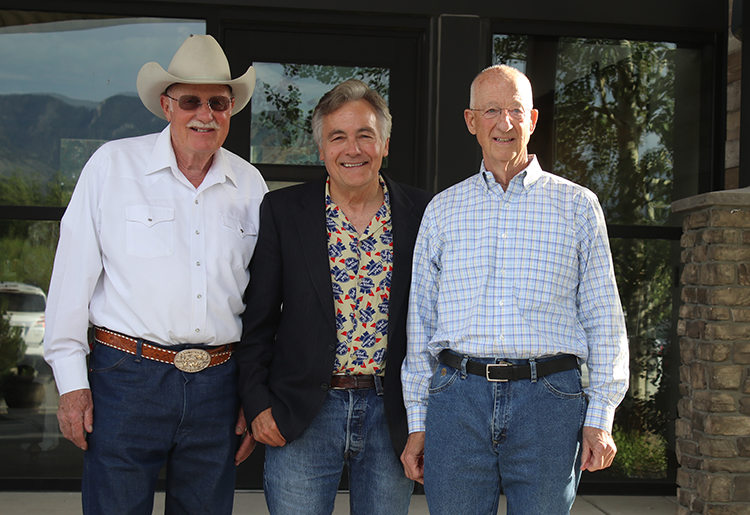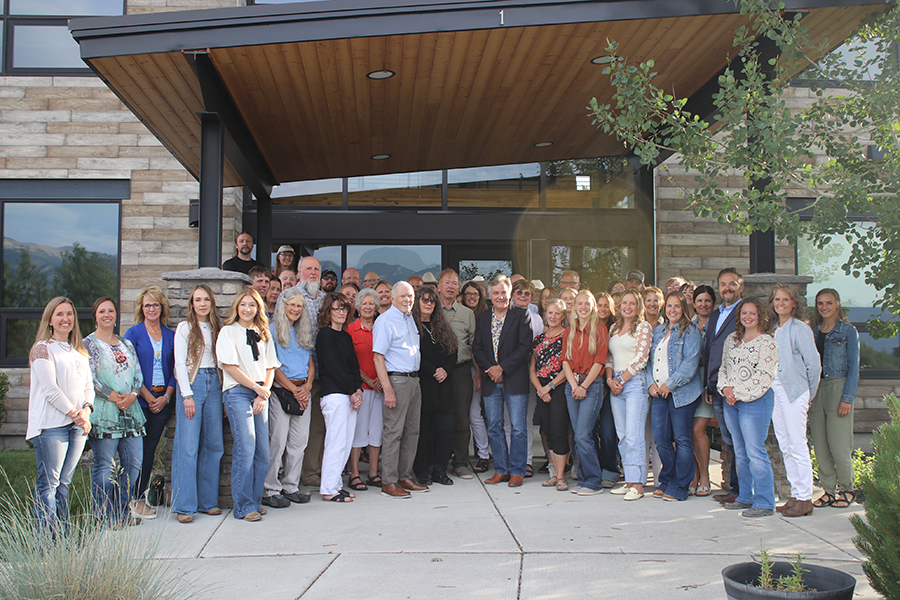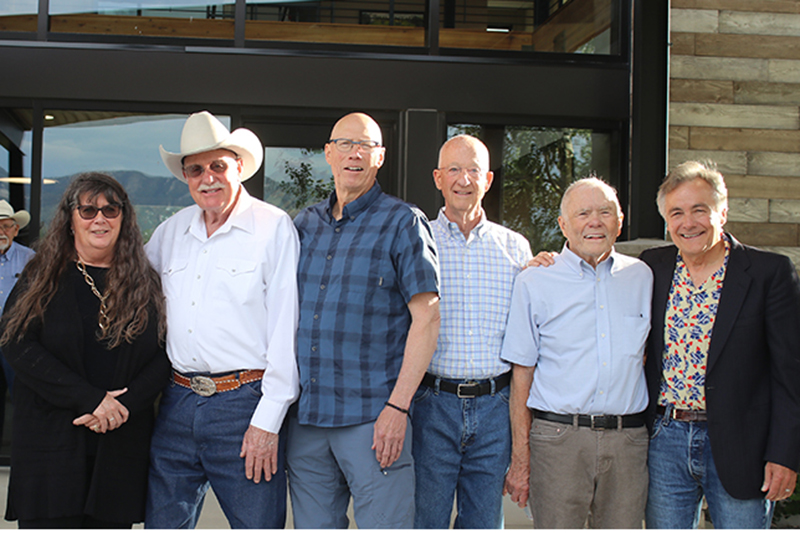by Dan Rieder
Dr. Wade Shafer, who has served as ASA’s Executive Vice President since 2013, is stepping into a new chapter in retirement.

Always Simmental
Dr. Wade Shafer has spent the majority of his life in the world of Simmental cattle. He grew up on the Shoestring Simmental operation, owned by his parents, Gordon and Lillian, who established their small herd in 1972 near Detroit Lakes in north central Minnesota. Their family consisted of Wade and four younger sisters: Brenda, Dawn, Shannon, and Dixie. After Lillian passed, Gordon, now 90, stayed on the farm, which is no longer in production. After graduating from high school, Shafer enrolled at North Dakota State University in nearby Fargo, receiving his bachelor’s degree in Animal Science. Always intrigued by the intricate science of animal breeding, he then enrolled at Colorado State University and earned his Master’s Degree, followed by a PhD while concentrating on quantitative genetics, bio-economics, and simulation modeling.
After graduation, Shafer returned home to apply the lessons he had absorbed from NDSU and CSU and gathered a number of area cooperators, who represented more than 500 head, eventually marketing 200 bulls annually. When that endeavor ended, Shafer accepted an offer from then-CEO Jerry Lipsey to join the ASA staff as Director of Breed Improvement in 2003.
The Predecessors

L-R: Don Vaniman, Wade Shafer, and Jerry Lipsey
The sixth Executive Vice President (EVP) in a very exclusive club, he follows Dale Lynch, who briefly held the post from 1968 to 1969 as the Association was being formed. The founding board then hired Don Vaniman, who served from 1969–1978, followed by Dr. Earl Petersen, who filled the position from 1978–1990. Brian Kitchen, former Canadian Simmental Association CEO, became the fourth EVP, and served from 1990–1996.
Dr. Jerry Lipsey, a highly respected animal scientist from the University of Missouri, became the organization’s fifth EVP, and held the position between 1996 and 2013. Lipsey’s 17-year term is the longest tenure in the history of ASA’s leadership position. When Lipsey retired, Shafer was the obvious choice to assume the EVP position.
For the Greater Good of the Industry
Shafer is known throughout the beef business for championing the entire industry, not just the Simmental breed. The formation and growth of International Genetic Solutions (IGS) is proof of this. Shafer has been heavily involved in IGS since its inception, which has since been described as an “unprecedented collaboration between progressive breeders and breed associations to enhance beef industry profitability.”
ASA and Shafer, as their leading science advocate, have been associated for more than two decades and have seen participation in IGS grow to the largest genetic database in the world. Breed associations and individual breeders from around the globe now submit their data to be evaluated.
Besides ASA, other breeds including Red Angus, which was allied with ASA during the formative years, that became involved as IGS gained popularity have been Angus, Gelbvieh, Limousin, South Devon, Shorthorn, and more. Foreign organizations and breeders primarily from Canada, Australia, and New Zealand have also joined the coalition.

Because all data are run and processed through one genetic evaluation, all cattle are evaluated on an identical basis. The IGS database includes over 23 million animal records, and 700,000 genotypes. In short, IGS is the epitome of multi-breed evaluation.
In addition, it allows individuals to directly compare EPD predictions across breeds and breed composition by accurately accounting for heterosis and breed differences.
Building Community
One of Shafer’s proudest achievements at ASA has been building a staff that he says is “the best in the business.” Many ASA employees have chosen to stay with the Association for decades, which is in large part thanks to the environment Shafer has fostered.
Chip Kemp, who worked with Shafer for many years, shared, “I hope the Simmental family truly appreciates what Wade has done and the successes the breed and Association have experienced during his time. This is a rarity in our industry. History books will note what happened at ASA during his tenure. It is quite possible that no association will ever experience the same level of success in such a short period of time. But what matters



more in the end, and matters more to Wade, is knowing that he helped one individual at a time reach their own goals, raise their family on that piece of dirt, and to build more sustainability in their own operation because they used the tools and services that his team championed.”
A testimony by Managing Editor Lilly Platts, which recently printed in SimTalk, sums up the affection and respect that the staff holds for Shafer as he winds down his ASA career. “When I started working for ASA, I immediately felt a sense of support and positivity, and I quickly learned that a lot of that is thanks to Wade. I have watched as he encouraged myself and other members of the staff,” she remarked.
“I also learned that Wade’s office door is always open. The number of people who have stuck with ASA for the majority of their careers is also a testament to the culture that Wade has fostered. Wade is extremely proud of this, as he should be,” she concluded.
Guiding the Association
Under Shafer’s 12-year leadership tenure as EVP, ASA continue its longtime emphasis on science and performance, while adding to ASA’s financial resources. He managed the sale of the Association’s original prime property and the organization’s 50-year-old building, used the windfall to finance an upgraded, functional headquarters building, and used the leftover balance to strengthen ASA’s financial reserves.
While managing ASA personnel and day-to-day operation he also led the Association’s lengthy battle against the COVID pandemic without a hitch even as many staff members worked primarily from home.
The Future
Shafer and his wife, Kathy, are parents of four children: Tony, Mike, Jake, and Kristi; and grandparents of five. Kathy and Wade have not announced a final decision on what the future may hold for them. However, they are adamant about remaining in the Bozeman area where they have put down roots and acquired property. It would be a good bet that he won’t be far away from his chosen career associated with beef cattle science and his favorite breed.

ASA Staff and Friends

